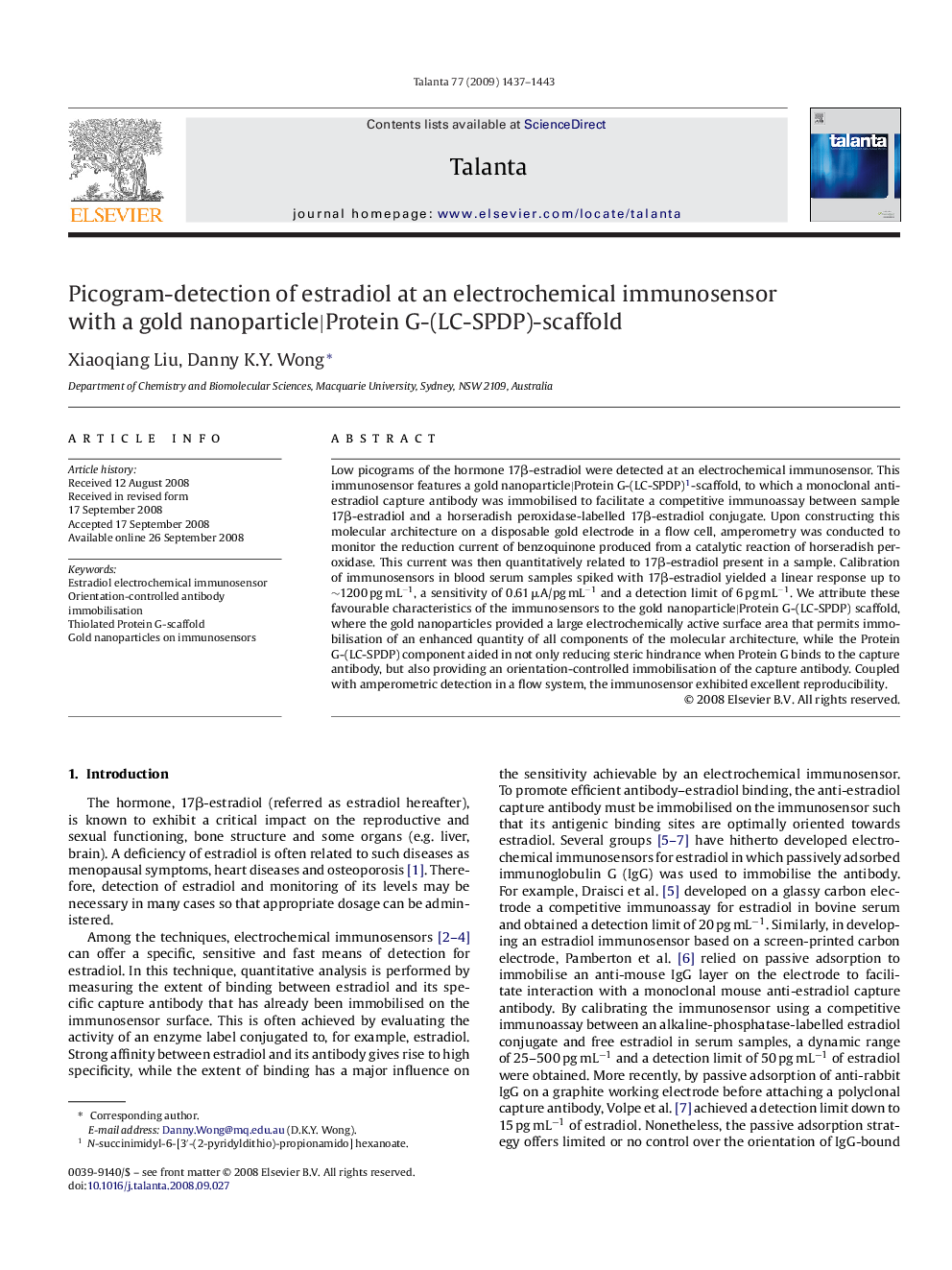| Article ID | Journal | Published Year | Pages | File Type |
|---|---|---|---|---|
| 1246995 | Talanta | 2009 | 7 Pages |
Low picograms of the hormone 17β-estradiol were detected at an electrochemical immunosensor. This immunosensor features a gold nanoparticle|Protein G-(LC-SPDP)1-scaffold, to which a monoclonal anti-estradiol capture antibody was immobilised to facilitate a competitive immunoassay between sample 17β-estradiol and a horseradish peroxidase-labelled 17β-estradiol conjugate. Upon constructing this molecular architecture on a disposable gold electrode in a flow cell, amperometry was conducted to monitor the reduction current of benzoquinone produced from a catalytic reaction of horseradish peroxidase. This current was then quantitatively related to 17β-estradiol present in a sample. Calibration of immunosensors in blood serum samples spiked with 17β-estradiol yielded a linear response up to ∼1200 pg mL−1, a sensitivity of 0.61 μA/pg mL−1 and a detection limit of 6 pg mL−1. We attribute these favourable characteristics of the immunosensors to the gold nanoparticle|Protein G-(LC-SPDP) scaffold, where the gold nanoparticles provided a large electrochemically active surface area that permits immobilisation of an enhanced quantity of all components of the molecular architecture, while the Protein G-(LC-SPDP) component aided in not only reducing steric hindrance when Protein G binds to the capture antibody, but also providing an orientation-controlled immobilisation of the capture antibody. Coupled with amperometric detection in a flow system, the immunosensor exhibited excellent reproducibility.
